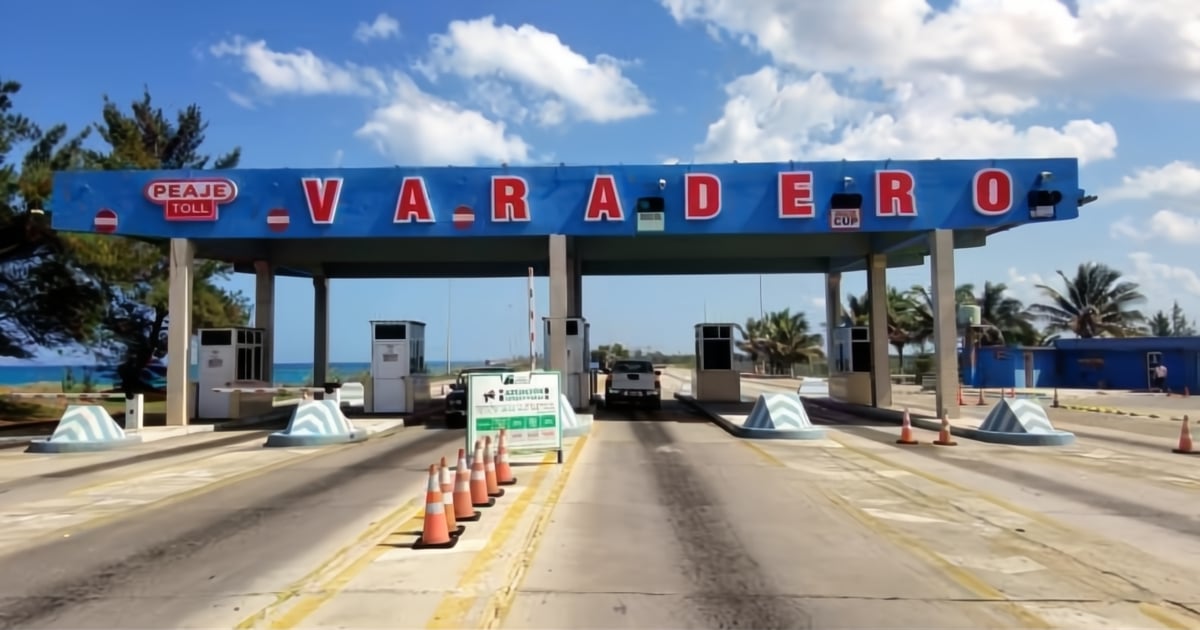The Cuban government revealed on Tuesday that it will implement a hike in toll rates starting February 10, 2025, aimed at generating revenue for the upkeep and repair of the nation's road infrastructure. As dictated by Law 174/2024, this initiative comes in response to the ongoing deterioration of the roads and the state's limited resources to ensure their upkeep, according to officials.
The Ministry of Transportation of the Republic of Cuba announced on its Facebook page the updated fees that both local and foreign drivers must pay when traveling on toll roads. According to official sources, drivers of motorcycles, cars, jeeps, vans, and panels will be charged 40 Cuban pesos (CUP) per segment traveled, while minibuses, buses, trucks, and trailers will incur a fee of 80 CUP.
Additionally, vehicles towing trailers will face extra charges of 10 CUP for light trailers and 20 CUP for larger ones. The toll collection will continue on the three current toll road sections: the Matanzas-Varadero Highway, which covers 32 kilometers; the Cayo Santa María Causeway, spanning 46 kilometers; and the Cayo Coco Causeway, extending 38 kilometers. The existing legislation allows for the possibility of adding new toll sections in the future, though specifics were not provided.
Financial Justifications for Toll Increases
Authorities argue that this measure is crucial for securing funding for road maintenance, which has so far relied almost entirely on the state budget. Last December, the Cuban government announced it was considering the introduction of new tolls as a strategy to support the upkeep and improvement of the road infrastructure, which has significantly deteriorated over recent years.
Transport Minister Eduardo Rodríguez Dávila mentioned during a meeting of the Commission for Service Attention, prior to the Fourth Ordinary Session of the National Assembly of People's Power (ANPP) in its X Legislature, that the proposal aims to generate foreign currency to ensure the safety and quality of the country's major communication routes. The state-run media outlet Cubadebate reported these statements.
Feasibility Studies and Future Toll Roads
The minister detailed that four feasibility studies have been completed to consider additional toll points. These include the Havana-Matanzas Tourist Corridor (Vía Blanca) from point 0 to the city entrance, the Havana Bay Tunnel, the route from José Martí International Airport beginning at the Boyeros Avenue intersection to beyond Terminal 4, and the Holguín-Guardalavaca Road, as reported by the Cuban News Agency.
Currently, Cuba's road network faces significant challenges due to resource scarcity, accumulated wear and tear, and weather conditions. Many roads are plagued by potholes, cracks, and impassable sections, complicating mobility and increasing accident risks.
Last year, it was disclosed that the Chinese government donated equipment to Cuba's Ministry of Construction for paving roads and international airports on the island. The donation included 93 units and tools, such as 25 dump trucks, 25 vibratory rollers, compactors, vibratory pavers, six front loaders, loaders, and backhoes, among others. It also included 26 generator sets with lighting towers for nighttime work.
Cuban authorities noted that in the same year, more than 700 individuals lost their lives due to traffic accidents. Although not the sole cause, the poor state of the roads contributes to these fatalities.
FAQs on Cuba’s New Toll Rates
Why is the Cuban government increasing toll rates?
The toll rate increase aims to generate revenue for the maintenance and repair of the country's deteriorating road infrastructure, addressing the limitations of state resources.
Which roads currently have tolls in Cuba?
The toll system currently operates on the Matanzas-Varadero Highway, the Cayo Santa María Causeway, and the Cayo Coco Causeway.
What impact does the road condition have on traffic accidents in Cuba?
Poor road conditions, including potholes and impassable sections, contribute to increased risks of traffic accidents, which resulted in over 700 fatalities last year.
